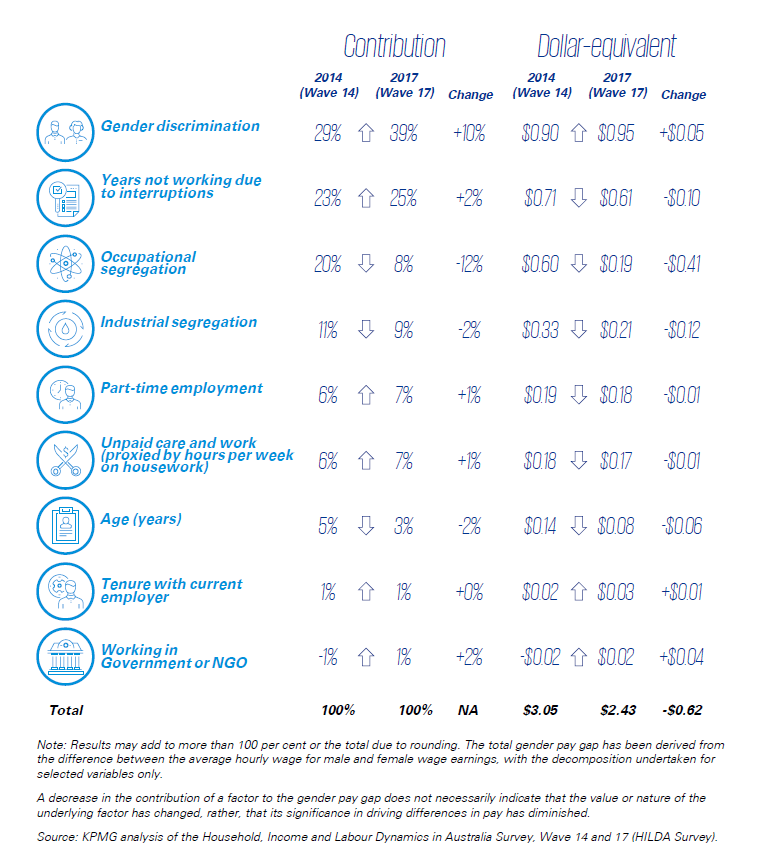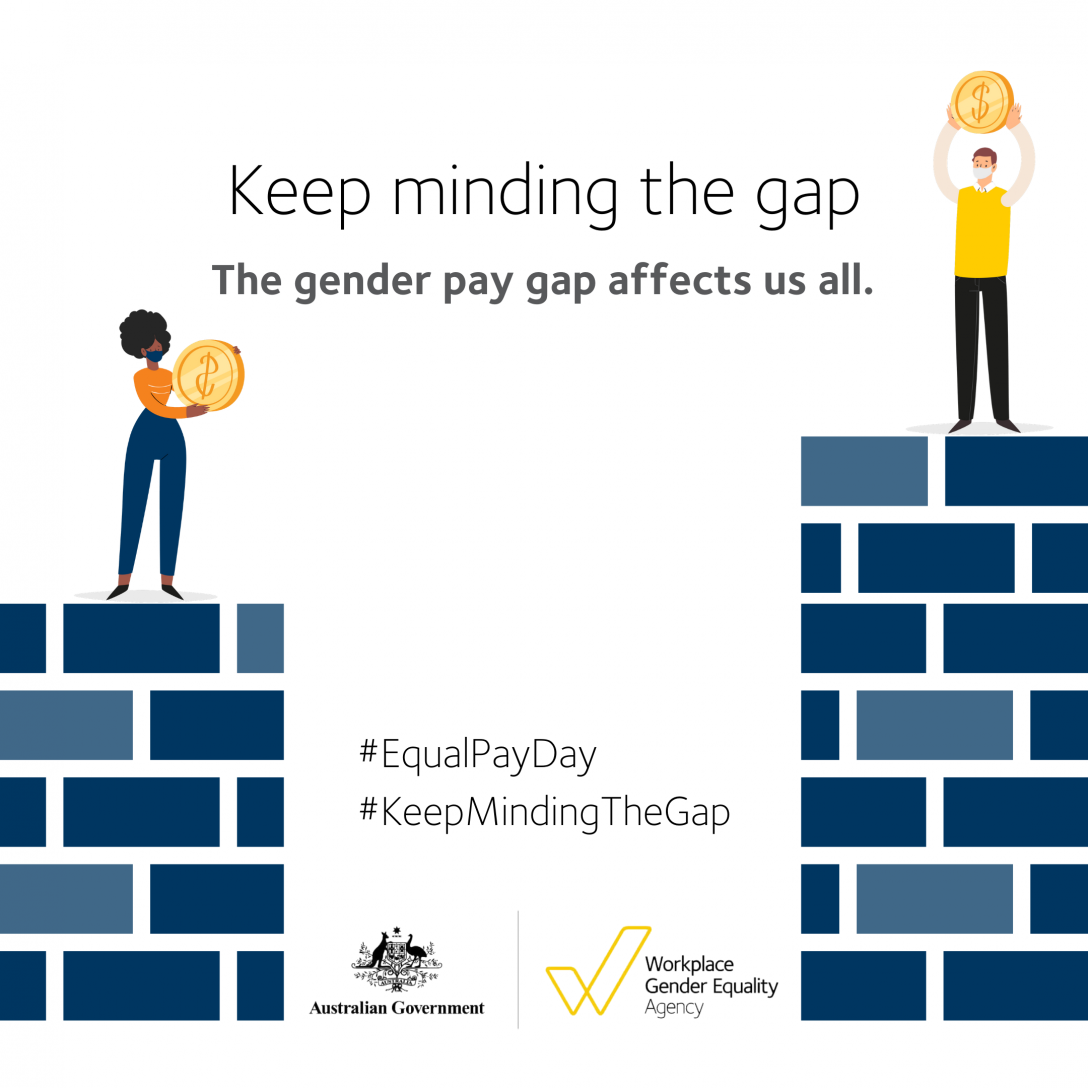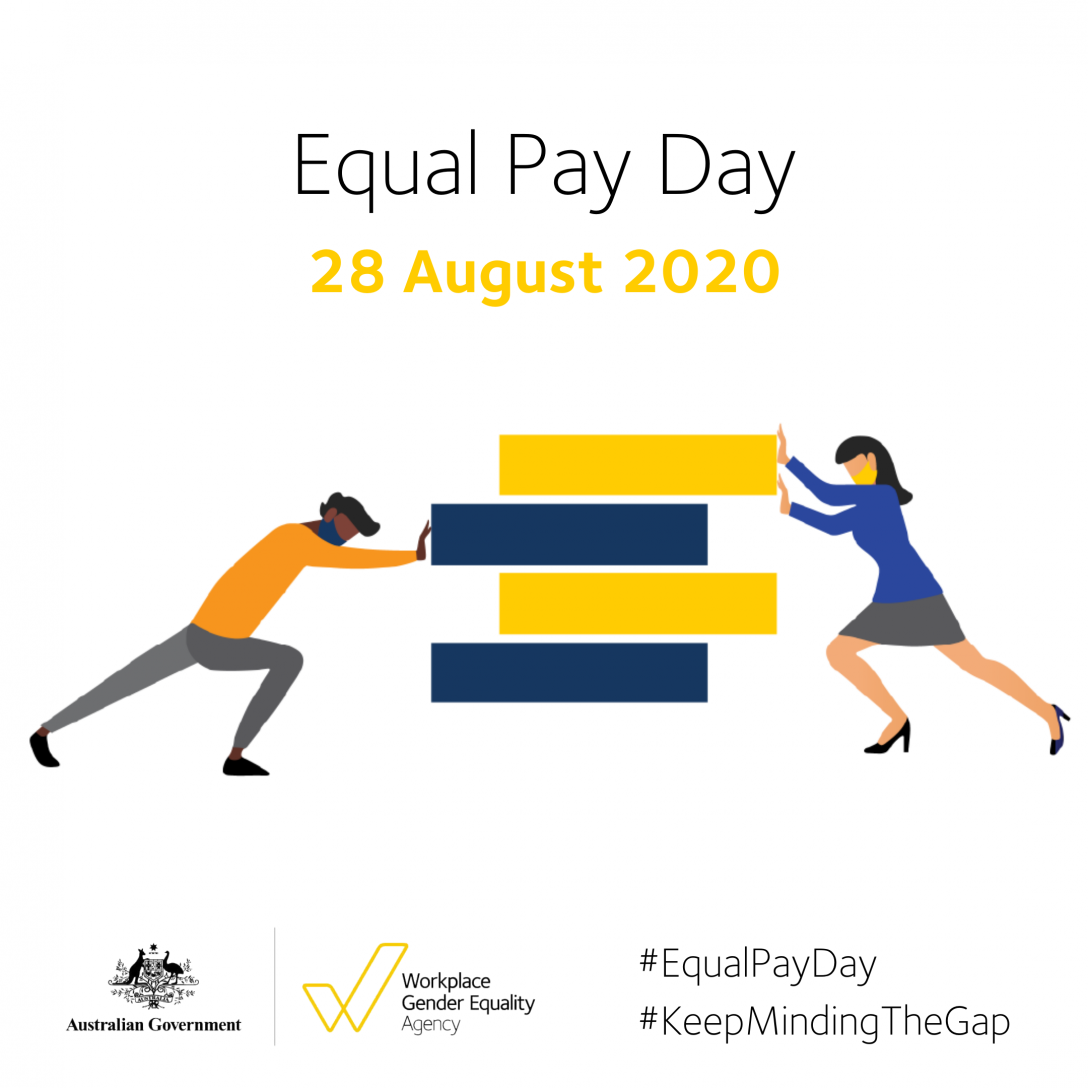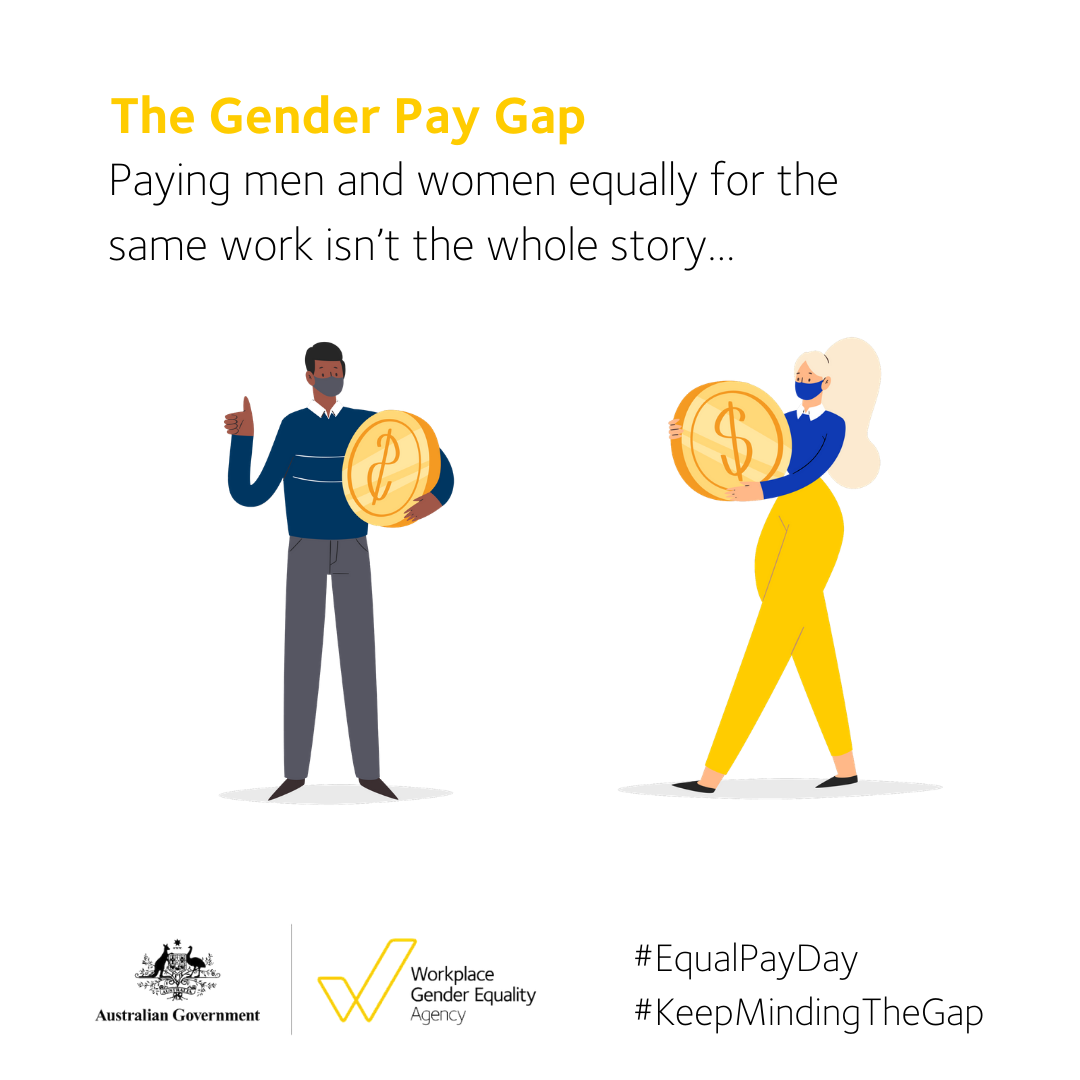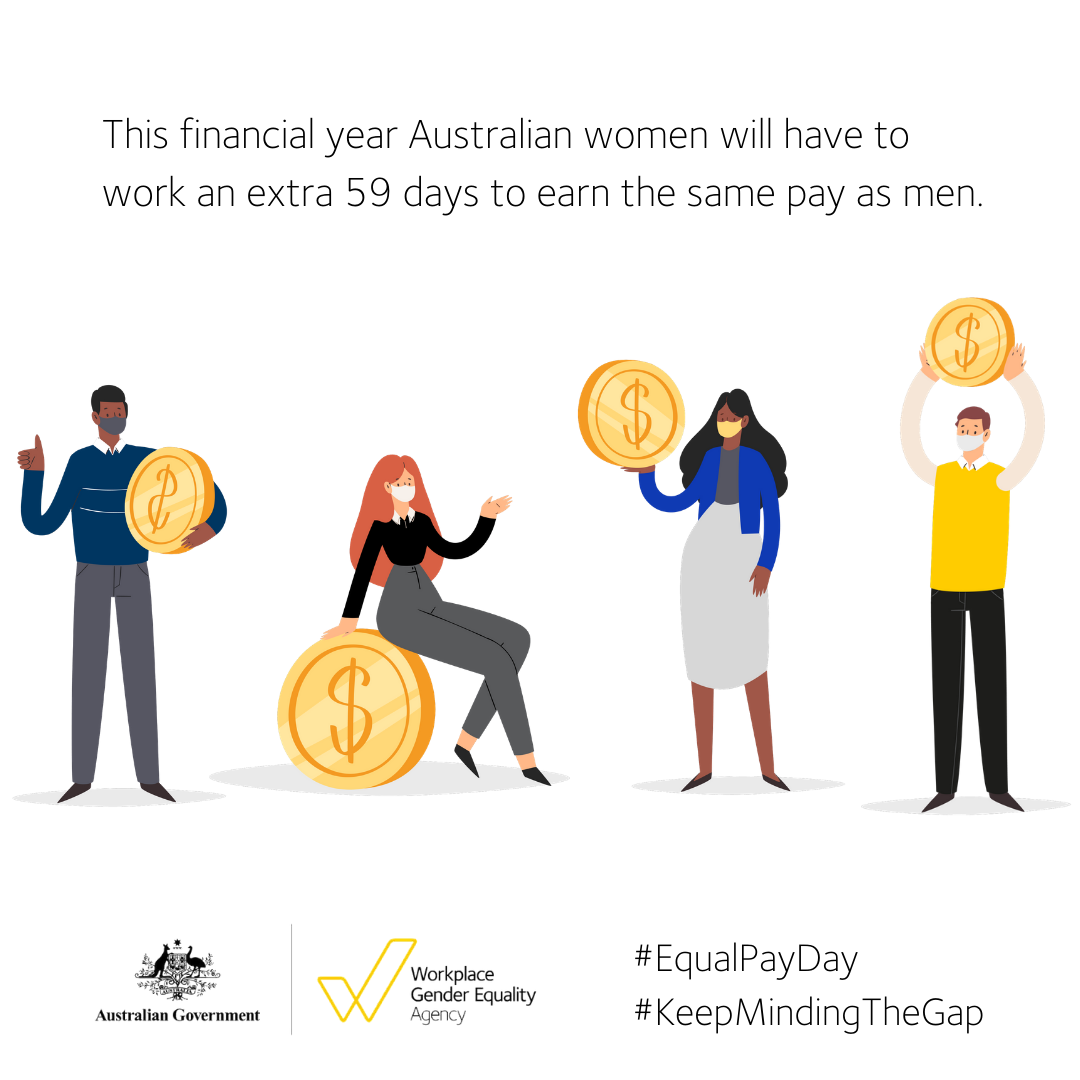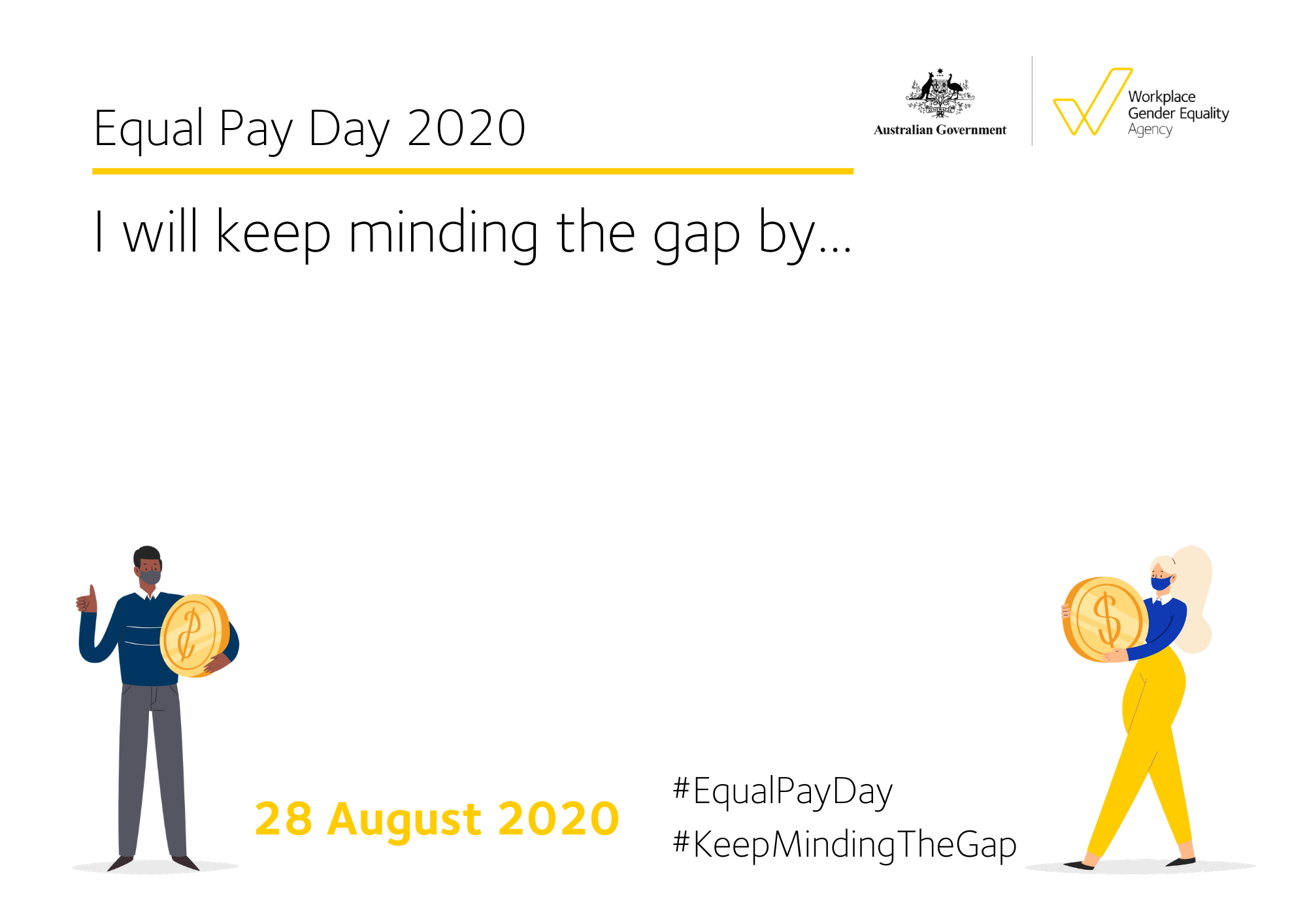Last year, in the lead up to Equal Pay Day, the Workplace Gender Equality Agency, (‘the Agency’) in partnership with KPMG Australia and the Diversity Council of Australia, launched the newest instalment of She’s Price(d)less: the economics of the gender pay gap.
While the causes of the gender pay gap are well documented in research, the She’s Price(d)less report confirmed the factors that underpin the gender pay gap, and to what extent they contribute. The report found, once again, that enduring gender stereotypes about the roles women and men play in paid work and caring continue to drive the gender pay gap.
Alison Kitchen, Chairman at KPMG Australia said, “Evidence reflected in this report identifies the key drivers of Australia’s gender pay gap – gender discrimination, occupational segregation and years not working due to interruptions – such as child care and caring for elderly family members.
“These findings provide crucial knowledge that can help government and business take action and build on the progress that has been made. Solving the challenge of Australia’s gender pay gap is not only fair and sensible, it’s an economically responsible endeavor.
If knowledge is power, then She’s Price(d)less has provided employers with plenty of power to take action. The report, through quantifying the drivers of the gender pay gap, provides employers with the information they need to effect change.
The report highlighted targeted actions employers can adopt to address each driver of the gender pay gap:
|
Gender discrimination
|
|
|
Care, family responsibilities and workforce participation
|
|
|
Gender segregation in industries and occupations
|
With this list of actions and further resources from the Agency to help you implement your plans, there is no better time for your organisation to set something in motion.
This Equal Pay Day, the Agency is encouraging organisatons to pledge to take at least one action from the list by Equal Pay Day next year.
While employer action is crucial, the Agency’s Director Libby Lyons acknowledges that the responsibility is not on employers alone.
“We know there are many actions employers can take to achieve pay equity. But we cannot rely solely on the actions of employers if we are going to close the gender pay gap. We must also change the outlook, the hearts and minds of all Australians. We must challenge ourselves in order to change the very ingrained gender stereotypes that underpin the gender pay gap.”
So let’s all commit to one action to close the gender pay gap.
